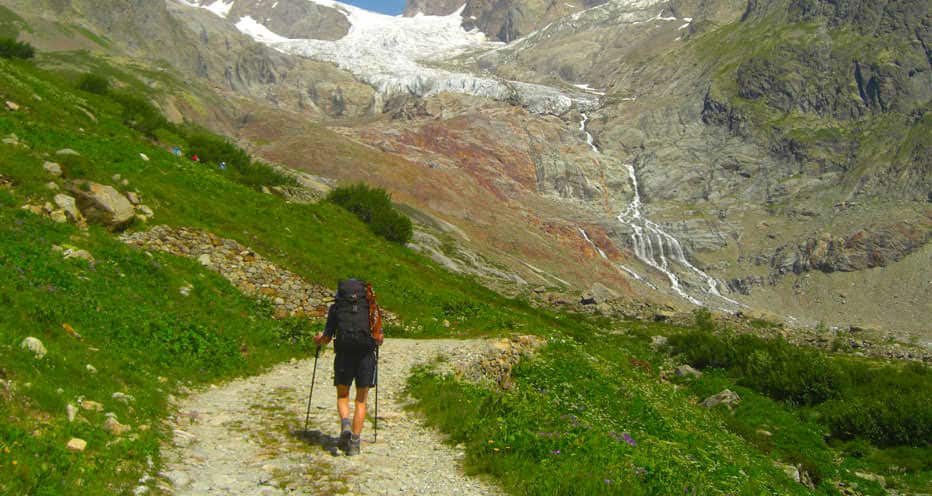
Tour du Mont Blanc dangers – Weather
Weather in the Alps can be unpredictable. Occasional snowfall or cold fronts are not uncommon in the summer months. It is best to be prepared, pack appropriate clothing and check local forecasts regularly.
Tour du Mont Blanc dangers – Storms
Storms are common in the mountains. They generally build up during a hot day and tend to break mid to late afternoon. Heavy rain, thunder and lightning with temperature drops make them hazardous. Best to keep up to date with forecasts. Get off the trail by mid-afternoon and, if you are caught in the storm, sit it out in shelter.
Tour du Mont Blanc dangers – Temperatures
Temperatures in the Alps vary greatly. Most of the time it should be warm enough to walk in shorts and T-shirts, but storms, wind and even snow make the Tour du Mont Blanc very different. Come prepared for everything!
Tour du Mont Blanc dangers – Snow
Early in the season, higher trails and mountain passes can still be under deep winter snow. The paths can be unclear and landmarks hard to find. It is best to avoid snowfields where slipping is a real possibility: walking poles are a real help if you need to cross snow.
Be mindful of rivers, gullies, and streams. Snow bridges can look safe, and even have an obvious path across them, but they will eventually collapse. Every year on the Tour du Mont Blanc there are accidents on snow bridges when hikers fall through. Best to avoid them altogether.
Tour du Mont Blanc dangers – Fog
Fog can be a real problem for route-finding. It is very easy to quickly become disorientated without a map, compass and knowing how to competently use the equipment. The Col du Bonhomme can be particularly problematic with thick fog.
Tour du Mont Blanc dangers – Sunshine
In the high altitude of the mountains, you are exposed to more UV. Therefore, to avoid sunburn and skin damage, limit the time your skin is exposed to direct sunlight. Use UV filter sunglasses and high protection sunblock. With intense sunshine comes heat and the danger of dehydration, so carry adequate fluid.Tour du Mont Blanc Safety and Rescue
Tour du Mont Blanc safety and rescue
Forward planning and good preparation are the best safety measures. Choosing to go on a guided trek instead of a self-guided trek can reduce a lot of the chance of falling foul of objective dangers.
 Tour du Mont Blanc
Tour du Mont Blanc